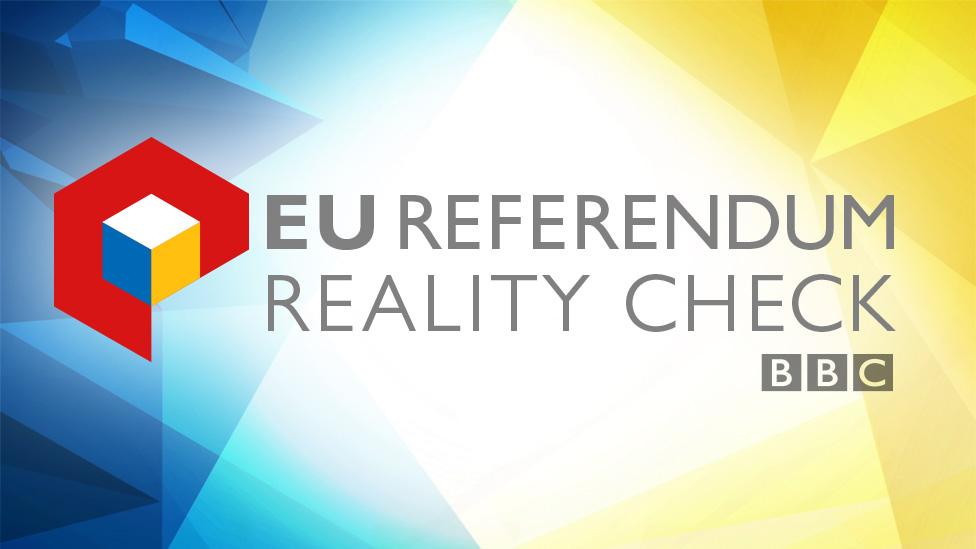Reality Check: Could 250,000 refugees come to the UK from 2020?
- Published
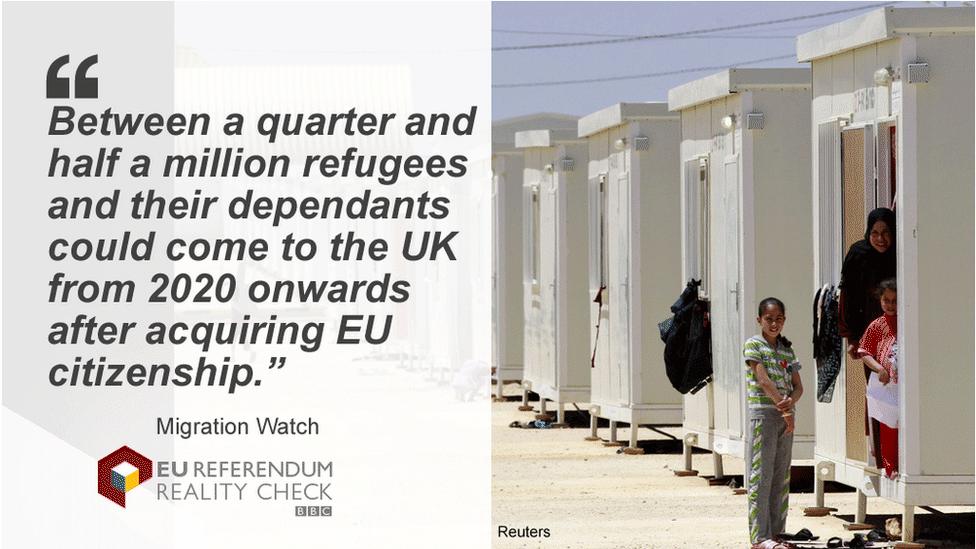
The claim: The Migration Watch think tank says that between a quarter and half a million refugees and their dependants could come to the UK from 2020 onwards after acquiring EU citizenship.
Reality Check verdict: We could not find clear evidence to support this figure. It is very difficult to predict what future migration flows will look like, as they depend on a number of factors. It can also take a number of years for refugees granted asylum in EU countries to acquire citizenship and apply for EU passports. We don't know how many people granted asylum in the stated period will go on to become citizens of another EU country.
About 1.3 million people applied for asylum in Europe in 2015, according to the EU statistics agency, Eurostat. , external
Of these, 333,350 were granted refugee status, subsidiary protection status, temporary protection or the right to remain on humanitarian grounds.
A report, external from Migration Watch, which wants to reduce levels of immigration to the UK, claims that between 240,000 and 480,000 refugees could move to the UK from 2020.
This figure includes family members who they say may travel with them but excludes "any future arrivals who might be granted asylum in other EU member states".
Migration Watch bases its estimates on the Eurostat data available for 2015 and the first three months of 2016. This shows that, in that period, roughly 460,000 migrants were granted asylum or humanitarian protection in EU countries.
However, they also claim that of those applicants already in the EU still waiting for a decision, "an additional 508,000 people will be granted asylum, bringing the total number granted refugee status in EU countries to 968,000 for 2015 and the first quarter of 2016 alone".
They calculate this on the current Eurostat data available on the recognition rate - or percentage of successful asylum claims - which is about 52%. However, it is not clear that this would remain the same.

Dr Nando Sigona, senior lecturer at the University of Birmingham and expert in migration, said that it was wrong to assume the same rate of success for pending cases. This is because more straightforward cases, like asylum applications from Syrians, tend to be decided on more quickly.
"Eurostat data shows that the acceptance rate of asylum claims particularly in some countries (e.g. Italy) is decreasing," he added.
Family members
This aside, to arrive at the figure of between 240,000 and 480,000 of the 968,000 coming to the UK from 2020, Migration Watch have made a number of other assumptions.
Firstly, they say that "each person granted asylum is likely to be followed by between four and eight family members".
They base this on a "leaked estimate from the German authorities". By assuming that four family members would follow 968,000 people, they calculate that the total inflow to Europe could be as high as 4.8m people.
We contacted the German government, who could not confirm the figures for the number of family members likely to join refugees in Europe. We do know that some other EU countries, like Denmark, are tightening the rules on family reunification and have extended the length of time that migrants can apply for family members to join them from one year to three.
Secondly, Migration Watch assume that the English language, availability of low-skilled jobs and existing migrant communities were a pull factor for refugees and migrants living in other parts of the EU.
The Migration Observatory research team at Oxford University previously, external concluded that these were indeed pull factors for some EU migrants.
However, as Dr Sigona points out: "Making assumptions about what recognised refugees will do after five years in a wealthy country is baseless. Secondary migration often happens immediately or if there is a major disruption. One could assume after five years that refugee families are more or less integrated where they are."
Thirdly, they claim that between 5% and 10% of these 4.8 million refugees could choose to come to the UK after acquiring EU citizenship. This brought them to the figure of between 240,000 and 480,000 people.
In their report, they say this percentage was mainly chosen for "illustrative purposes", though they also cited research showing that between "a third and half of the Somalis granted asylum in the Netherlands have relocated to the UK".
We found a study, external suggesting that the Dutch-Somali community in the UK varied between 10,000 and 20,000 between 1998 and 2002 - roughly around one-third of the Dutch-Somali population living in the Netherlands at the time.
However, according to official figures released by Eurostat, external, Somalis only represented 2% of the approximately 330,000 asylum seekers granted protection in EU member states in 2015. In 2014, 4% of the 185,000 people granted protection were Somali.

We could not find any other clear evidence to support this 5-10% figure, though Migration Watch say the EU's resettlement programme for refugees and current levels of migration from southern Europe were also factors which they considered.
Lastly, Migration Watch say that refugees could begin to arrive in the years following 2020. They base this on refugees granted asylum needing at least five to six years to becomes EU citizens and get an EU passport, which would allow them to live and work in another EU country. We also don't know yet how many refugees granted asylum in the stated period will eventually go on to acquire citizenship of another EU country.
As previously mentioned here, this can take up to six to eight years in Germany and asylum seekers have to fulfil a number of conditions before being accepted.
Robert McNeil, from the Migration Observatory research team at Oxford University, said: "We simply do not know how many people may come to the UK in future because it is dependent on an enormous number of different factors. The numbers put forward in this report are speculating about what may happen in the future."



- Published27 May 2016

- Published29 April 2016
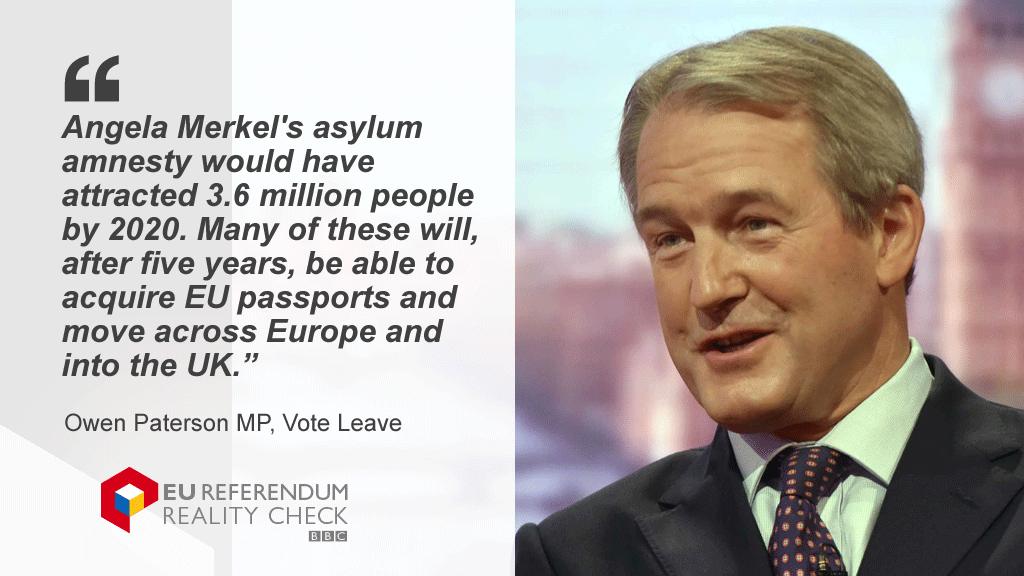
- Published24 February 2016
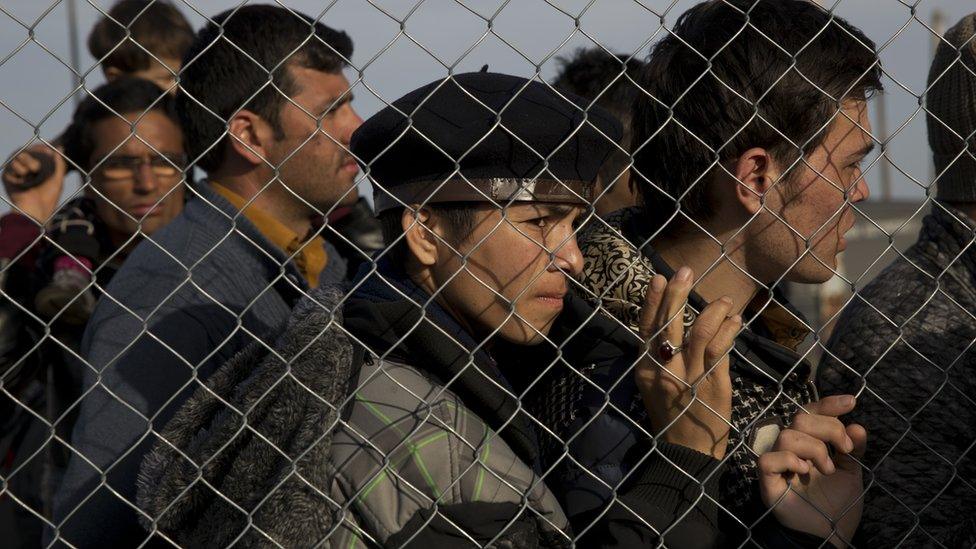
- Published12 January 2016
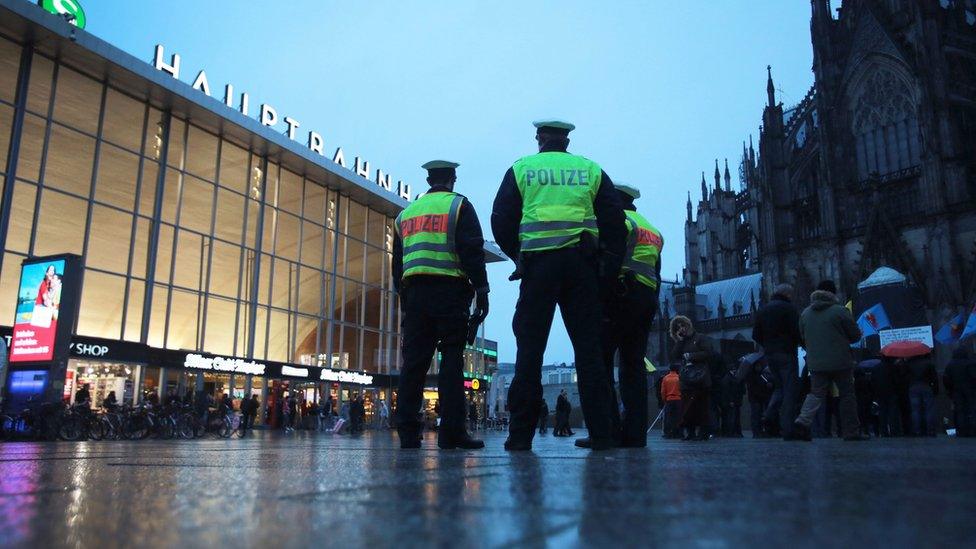
- Published22 February 2016
